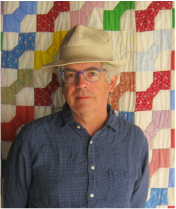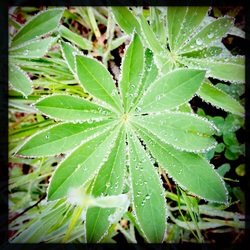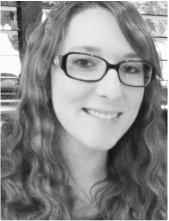ASSAY: A JOURNAL OF NONFICTION STUDIES
1.2
1.2
|
During the Fall 2014 semester at Fresno State, in the first class session of an Experimental American Literature course, the class was told we’d be creating our own Blue Guide. That is, we would be reading Michael Martone’s The Blue Guide to Indiana and then, as a class, we’d create our own Blue Guide to Fresno. This imitation assignment proved to be enjoyable for the entire class, and resulted in Blue Guide entries covering everything from The Big Fresno Fair, to the Turkey Vulture Migration, to a Mega-Church Wine Walk. Having very much enjoyed both the book and the imitation assignment, I was thrilled to do the following interview with Michael Martone.
We read your book, The Blue Guide to Indiana, in an Experimental Literature class during the Fall semester of 2014 at Fresno State. We realized during class discussion that some copies of the books had a disclaimer on the front cover noting it was in no way affiliated with the Blue Guide travel books, while others did not. The conversation then turned to how well that disclaimer works with the book. Did you have a hand in the notice being added to the book? What are your thoughts on the disclaimer and on the fact that some readers see it as a brilliant addition to the book? Well, you haven’t lived until you have received a Cease and Desist letter from a lawyer. After The Blue Guide to Indiana was published, FC2 received such a letter from lawyers representing the publisher of the real Blue Guide series in London and the American publisher, W.W. Norton. What my book did was infringe on trademark. And we did purposely. We wanted the book to be mistaken for an actual guidebook and, perhaps, placed in the travel section of bookstores. Bookstores cull the racks of the travel section less often than those of fiction. We of course argued that this was a parody, a satire. They responded that they understood it was a satire and fiction but a trademark has to be defended. Now, we might have won in court but the expense of defending our right to publish against the protection of trademark would have been expensive, too dear for the little little press of FC2. So we “settled.” We asked what we could do to keep the book in print. They asked for, and got, a disclaimer sticker on the cover and a notice in trade magazines. You will see that there is a notice also on the amazon page. I asked if I could write the sticker, and they allowed me to. So I wrote it as another fiction, a story in the form of a legal notice. I think it does “work” with the book. So there are three covers circulating out there. One is without the sticker that was already in the world before the suit. The second is the first editions where we were able to stick on the sticker before shipping. And the third is a subsequent edition where the sticker is printed on the cover as part of the art. Interesting bit of trademark law: If you have a trademark you must protect it vigorously, and if you don’t you surrender the right to sue the next infringement. The classic story is that the first thing McDonald’s did when entering the market in Scotland was sue all the restaurants with McDonald in the name. I have received a Cease and Desist letter for another book for invading privacy. I have yet to get a letter for copyright violation, but when I do I will have the trifecta. I’m curious about how you went about conducting the research for The Blue Guide to Indiana. You use a good deal of specialized language. How do you approach accessing and internalizing that language? I give my students an assignment to write something bad. It is a trick assignment because what they do usually is take a rule like “don’t use passive voice” and then write something exclusively in passive voice. The result is that the bad writing is often read as “good” or, at least, as very interesting. Really what they do is create a good satire of bad writing that is funny, and it teaches them that what we think of as bad (or good) depends upon the context of where and why it is written and read. As writers writing in the context of “literary prose and poetry” we often forget about the frame—the literary. We think there is only this one kind of writing that we should be writing and that we should completely internalize, naturalize the rules and conventions of literary writing as if there is no other writing worth our attention. The truth is there are many many kinds of writing that we deal with everyday. I read the writing on my breakfast cereal box today. Then the newspaper. Then email. Twitter. Letters and postcards. Bills and ads. My student’s papers. New York Magazine. Instructions to assemble furniture. A medical prescription. All of these various texts are different from each other and all are interesting in their own way. So not research so much as paying attention to the variety of writing in the world. How is writing for travel guides made? How does it differ from a short story published in, say, the Iowa Review? All language is special unto itself. For me the fun of being a writer is mastering or trying to master all those special languages. I read in an interview that you got a few calls about some of the individual stories you'd gotten published; for instance, you mentioned that the Washington Post called you when they were doing a piece on little known federal facilities to talk to you about The Federal Research Center for Coffin and Casket Standards. Did you anticipate these types of reactions? What were your expectations for readers’ reception of Blue Guide? If this was an “experiment” it was an experiment in framing a work. Most times if you write literary stories or poems you would just assume that you would publish them in literary journals and magazines. Those publishing venues would be the frames of the story, helping the reader read the story. With The Blue Guide to Indiana, I instead published the stories in local newspapers and travel magazines in Indiana and I negotiated with the editors to have then published as actual things to do or see in Indiana. I wanted the stories to “pass” as actual stories. I think of this, and I hope it was true for readers of the newspapers and magazines, that this was a delightful confusion. Literally, an amazement, a bewildering. The border I was working was the one between fact and fiction in the hope it would open up possibilities for the reader and that the normal and everyday would, right in front of them, become magical. A few of the pieces are actually actual, and yet those are often the ones readers believe to be the most far-fetched. I believe I was creating a kind of productive confusion and not a threatening one in order to create in the reader an attentive sense of attention to the world so that what is really real and what is merely playful can be better sorted out. Washington Irving’s book was published as a nonfiction History of New York. Defoe’s books were all published as nonfiction. As writers and artists, I think we often don’t work with the frame as much as we should, that the literary is corralled into safe identifiable enclosures. I wanted to break the frame and see what the reader now saw outside of the enabling delivery device. As I mentioned before, this assignment was for an experimental literature class. Certainly, no writer really wants to be labeled or classified as this or that, but I've noticed there seems to be a particular resistance to the term experimental. What are your thoughts on The Blue Guide to Indiana being viewed as an experimental text? What are your thoughts on the use of that term with literature in general? Yes, I like to think of myself—if I am to be placed in a category—as a formalist writer. As I was saying above, I like the differences of things –the language as well as the structure. So call me a formalist. When it comes to “experimental,” I think it is used, when it is used, very inaccurately. Experimental implies an opposite, a binary term, and that is usually the “traditional” story. And by “traditional” my friends who write “traditional” stories usually mean stories that are narrative domestic realism and can be traced back to Chekhov and here in America writers like James and Wharton. My traditional writer friends tell me that they think student writers should do the traditional story first before they can experiment, implying that the traditional story, as the name suggests, came before the experimental deviations of the later 20th century. But in really, if you think about it, the true “traditional” story in American English is written by Poe, Hawthorne, and Irving whose “experiments” predate the traditionally thought of traditional stories of Chekhov. No, for me the true experiment was Chekhov and his new realism when he incorporated the new psychological ideas of character “depth” and interiority. Now there is a startling experiment! And it is one which many writers are still exploring. The notion of “character” is profoundly new and experimental. There were characters in literature before, but we now think of those constructions more as characteristics, caricatures, and types not the full-bodied, well-rounded, deeply psychologically real characters we are still experimenting with today. I’m curious about your feelings on the Blue Guide imitation assignment for our class. Do you have your own students do imitation assignments? In your opinion, how do students benefit from doing imitations? Also, which texts would you choose to use for this type of assignment and why? I read somewhere that Auden said if he ever taught creative writing he would teach two things: Parody and Cooking. I actually did a class like that once when a classroom I was assigned to teach in came with a kitchen. I think the hardest thing to teach when one teaches writing is writing’s material nature. If one paints, a critic can comment on such things as color or the consistency of the paint and not just the picture it is creating. Unlike painting, writers would never think to comment upon the nature of the ink or the tooth of the paper a work is printed upon. Nor do we often question the margin size or the leading or font. We get used to dealing only in abstractions and forget those very concrete choices contribute to the meaning and the effect of a piece of writing. Imitation, I think, makes us look, a little bit, at how something looks, feels. You are assigned to mimic often not only the meaning of the piece but how it “looks.” You have to see it to see it. Imitation, if it does nothing else, should make you conscious of all the different artifices of art. I wanted The Blue Guide to look like a Blue Guide. That meant I had to pay attention to the idiom and rhetoric of the text but also the design and look of the book. Imitation defamiliarizes a work for the student. It makes it new again as it is not just a copy but also something completely different. A good text to use when you are thinking about imitation is Borges’s "Pierre Menard, Author of the Quixote." |
Click here to download a printable PDF with Works Cited.

Michael Martone was born in Fort Wayne, Indiana. It had been a difficult labor and delivery. His mother, telling him the story of his birth each year on his birthday, told him she remembered nothing of it but being told by her doctor moments before he placed her under anesthesia that she would remember nothing. But she did remember waking up, remembered the first thing she saw upon waking was Martone’s father, sitting at the edge of the bed, his forehead pressed against the rough wool blanket covering her now deflated lower body. “We lost the baby?” she remembers asking Martone’s father who, at that moment, sat up to deliver the news that no, they hadn’t lost the baby, that he was around here someplace. During those birthdays after the rehearsing of the difficult birth and delivery of Martone, Martone’s mother would then review with Martone Martone’s Baby Book Martone's mother had begun almost the minute she returned home with the baby. A scrapbook, a picture album, the baby book was a commercial template designed to guide the new mother through the milestones and transitions of the infant, toddler, child. The book contained prompts: Baby’s first smile, Baby’s first step, Baby’s first word, Baby’s first baby tooth. There were empty squares and rectangles sketched out on the pages to indicate where the new mother was to affix photographic documentation of events and attach solid evidence—a lock of newly shorn hair, a remnant of outgrown onesie, a silent rattle, or tarnished spoon—the residue of growth. A knit bootie, a hospital cap. Baby’s first shot, Baby’s first cousins, Baby likes to eat, Baby sleeps through the night. Over the years, the Baby Book grew fat, filled with the trinkets and detritus of Martone’s growing up, its pages brittle from the drying glue and ink-stained smeared from all the annotations Martone’s mother added to the margins and, in some cases, the photographs and ephemera itself. On those birthdays Martone’s mother read to Martone the content of Martone’s Baby Book she always read backwards, beginning on a last page that had only recently been completed, documenting events only a few months old—Baby’s first baby, Baby’s first mortgage—and working backwards through the years, the accumulation of evidence and layers of time shedding, sloughing off, a grand collage of digression, a kind of archeological dig back through the spoil to the unspoiled spot, to the day of the birth itself and the unreconstructed memories of the difficult labor and delivery. Michael Martone was born in Fort Wayne, Indiana. It was a difficult labor and delivery with Martone actually being extracted from the womb by means of obstetrical forceps, the lingering indentations of which he can still trace as he reads through the Baby Book, absentmindedly worrying his skull’s deformities. The earliest exhibit, yellowing cellophane tape taping it to the first page, his hospital name bracelet composed, one letter a bead, of threaded beads, barely blue now after all these years, misspelling out his name: M I C H E A L. Martone’s mother died a year ago, and in all those years before during all those reiterations of excavating the Baby Book Martone never remembered to ask who stitched together those bracelets out of the random and scattered beads—Baby’s first handcuffs, Baby’s first first name.
|
Emily Basiletti received her Bachelor’s in English literature with a minor in Latin classical studies from California State University, Fresno. She’s completing her MFA in creative nonfiction, also at Fresno State, where she serves as a nonfiction editorial assistant for the Normal School: A Literary Magazine and as a writing tutor at the campus Writing Center. She’s currently working on her first manuscript.
|

